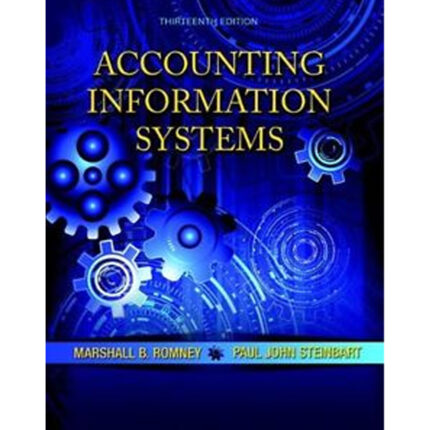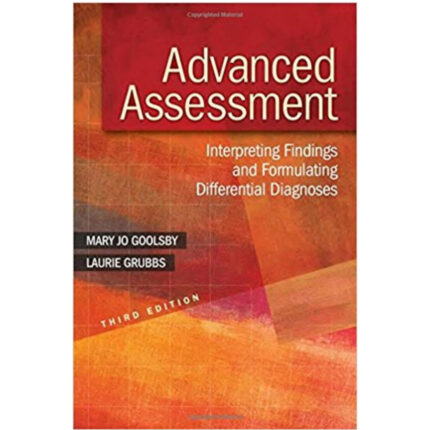Accounting What The Numbers Mean 12th Edition By David Marshall – Test Bank
Chapter 11 Financial Statement Analysis
1) Which of the following is not a category of financial statement ratios?
A) Financial leverage.
B) Liquidity.
C) Profitability.
D) Marketability.
Answer: D
Difficulty: 1 Easy
Topic: Liquidity Measures
Learning Objective: 11-01 Explain how liquidity measures can be influenced by the inventory cost flow assumption used.
Bloom’s: Remember
AACSB: Analytical Thinking
Accessibility: Keyboard Navigation
2) Management’s use of resources can best be evaluated by focusing on measures of:
A) liquidity.
B) activity.
C) leverage.
D) book value.
Answer: B
Difficulty: 2 Medium
Topic: Activity Measures
Learning Objective: 11-04 Discuss how the number of days’ sales in both accounts receivable and inventory are used to evaluate the effectiveness of the management of receivables and inventory.
Bloom’s: Understand
AACSB: Analytical Thinking
Accessibility: Keyboard Navigation
3) An individual interested in making a judgment about the profitability of a company should:
A) review the trend of working capital for several years.
B) calculate the company’s ROI for the most recent year.
C) review the trend of the company’s ROI for several years.
D) compare the company’s ROI for the most recent year with the industry average ROI for the most recent year.
Answer: C
Difficulty: 2 Medium
Topic: Profitability Measures
Learning Objective: 11-04 Discuss how the number of days’ sales in both accounts receivable and inventory are used to evaluate the effectiveness of the management of receivables and inventory.
Bloom’s: Understand
AACSB: Analytical Thinking
Accessibility: Keyboard Navigation
4) An entity’s current ratio will be influenced by:
A) the inventory cost flow assumption used.
B) writing off an overdue account receivable against the allowance for uncollectible accounts.
C) the depreciation method used.
D) issuance of a stock dividend.
Answer: A
Difficulty: 2 Medium
Topic: Liquidity Measures
Learning Objective: 11-01 Explain how liquidity measures can be influenced by the inventory cost flow assumption used.
Bloom’s: Understand
AACSB: Analytical Thinking
Accessibility: Keyboard Navigation
5) The comparison of activity measures of different companies is complicated by the fact that:
A) different inventory cost flow assumptions may be used.
B) dollar amounts of assets may be significantly different.
C) only one of the companies may have preferred stock outstanding.
D) the number of shares of common stock issued may be significantly different.
Answer: A
Difficulty: 2 Medium
Topic: Activity Measures
Learning Objective: 11-04 Discuss how the number of days’ sales in both accounts receivable and inventory are used to evaluate the effectiveness of the management of receivables and inventory.
Bloom’s: Understand
AACSB: Analytical Thinking
Accessibility: Keyboard Navigation
6) The inventory turnover calculation:
A) is wrong unless cost of goods sold is used in the numerator.
B) is wrong unless sales is used in the numerator.
C) is an alternative way of expressing the number of days’ sales in inventory.
D) requires knowledge of the inventory cost flow assumption being used.
Answer: C
Difficulty: 2 Medium
Topic: Activity Measures
Learning Objective: 11-03 Discuss the influence of alternative inventory cost flow assumptions and depreciation methods on turnover ratios.
Bloom’s: Understand
AACSB: Analytical Thinking
Accessibility: Keyboard Navigation
7) If a firm’s payment terms for sales made on account to its customers were 2/10, n30, the number of days’ sales in accounts receivable would be expected to be:
A) less than 10.
B) between 10 and 25.
C) between 25 and 40.
D) over 40.
Answer: B
Difficulty: 3 Hard
Topic: Number of Days’ Sales Evaluation
Learning Objective: 11-04 Discuss how the number of days’ sales in both accounts receivable and inventory are used to evaluate the effectiveness of the management of receivables and inventory.
Bloom’s: Apply
AACSB: Analytical Thinking
Accessibility: Keyboard Navigation
8) Asset turnover calculations:
A) are made by dividing the average asset balance during the year by the sales for the year.
B) are made by dividing sales for the year by the asset balance at the end of the year.
C) communicate information about how promptly the entity pays its bills.
D) should be evaluated by observing the turnover trend over a period of time.
Answer: D
Difficulty: 3 Hard
Topic: Activity Measures
Learning Objective: 11-03 Discuss the influence of alternative inventory cost flow assumptions and depreciation methods on turnover ratios.
Bloom’s: Apply
AACSB: Analytical Thinking
Accessibility: Keyboard Navigation
9) When a firm has financial leverage:
A) ROI will be greater than ROE.
B) ROI will usually be less than it would be without leverage.
C) risk is greater than if there wasn’t any leverage.
D) the firm will always have a higher ROE than it would without leverage.
Answer: C
Difficulty: 2 Medium
Topic: Financial Leverage Measures
Learning Objective: 11-07 Explain what financial leverage is and why it is significant to management, creditors, and owners.
Bloom’s: Understand
AACSB: Analytical Thinking
Accessibility: Keyboard Navigation
10) The dividend payout ratio describes:
A) the proportion of earnings paid as dividends.
B) the relationship of dividends per share to market price per share.
C) the percentage change in dividends this year compared to last year.
D) dividends as a percentage of the price/earnings ratio.
Answer: A
Difficulty: 2 Medium
Topic: Dividend Evaluation
Learning Objective: 11-06 Discuss how dividend yield and the dividend payout ratio are used by investors to evaluate a company’s common stock.
Bloom’s: Understand
AACSB: Analytical Thinking
Accessibility: Keyboard Navigation













Reviews
There are no reviews yet.